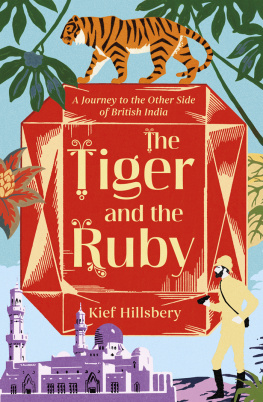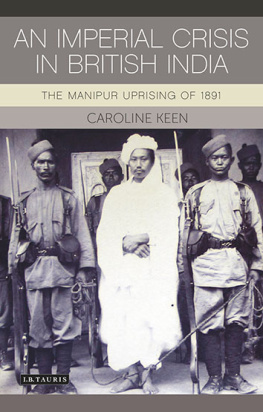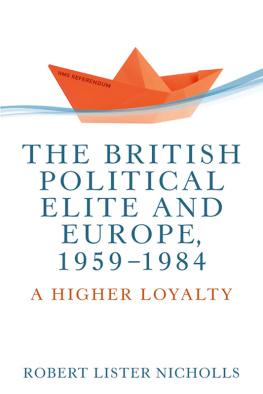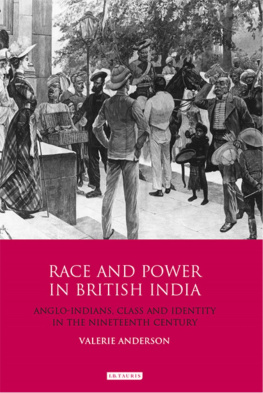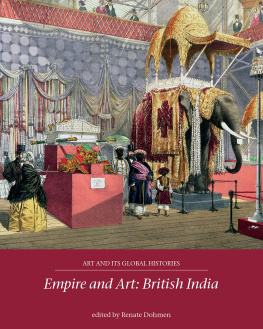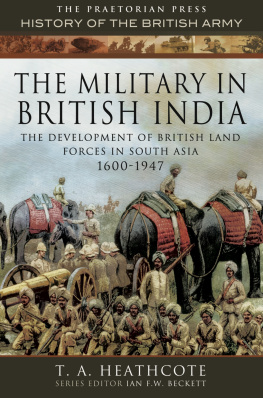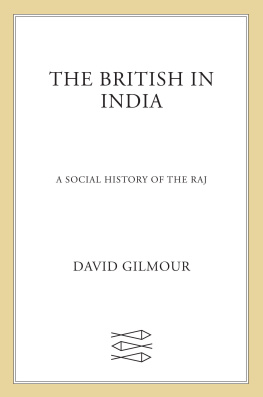First published in 1996
by Curzon Press
Published 2013 by Routledge
2 Park Square, Milton Park, Abingdon, Oxon OX14 4RN
711 Third Avenue, New York, NY, 10017, USA
Routledge is an imprint of the Taylor & Francis Group, an informa business
1996 C.J. Hawes
Typeset by LaserScript, Mitcham, Surrey
All rights reserved. No part of this book may be reprinted or reproduced or utilised in any form or by any electronic, mechanical, or other means, now known or hereafter invented, including photocopying and recording, or in any information storage or retrieval system, without permission in writing from the publishers.
British Library Cataloguing in Publication Data
A catalogue record for this book is available from the British Library
Library of Congress in Publication Data
A catalogue record for this book has been requested
ISBN 13: 978-0-700-70425-5 (hbk)
Today an Anglo-Indian community still remains in India, its families often linked to the Anglo-Indians who left in the mid-twentieth century, at the time of Indias Independence, for new lives in Britain, Canada and Australia. They are the acknowledged descendants of the mixed race Eurasian children of the British Raj, officially described as Anglo-Indian since 1911. Their origins date back to the first arrival of European traders in India at the start of the sixteenth century, but their importance to the study of British involvement in India first becomes clear in the sixty years from 1773 to 1833, when an explosion in the numbers of British Eurasians forced their presence, their needs, and their demands on to the social and political agenda of British India. By 1830 there were already many more Eurasians in India than British civilians. One hundred years later within a total of 300,000 of European descent, (civilians and soldiers included) living and working in India, Eurasians Anglo-Indians had become a clear majority of the population of Western descent, dress, religion, custom and life-style. They counted themselves as members of British society and were widely employed, albeit generally in subordinate roles, in occupations of value to the operation of the imperial regime.
The general exploration and literature of British involvement in India is extensive and continues still. The lives and works of viceroys, bishops, governors, missionaries and officials have commanded attention. So too has the relationship between British colonial authority and Indians themselves. Rut Eurasians, who in their lives were often the Cinderellas of British society, are nowadays but a footnote to the historical account of British India. No definitive account exists for the crucial years of the late eighteenth and nineteenth century in which the numbers of Eurasians with British fathers rose from the hundreds to the thousands and at whose conclusion Undoubtedly this embarrassed the Raj then and fits awkwardly into the British imperial story now.
There is the problem too for historians of the early Eurasian community that, in contrast to senior British officials and soldiers, there are no caches of letters home to their families in Britain nor tin trunks of manuscripts brought back on retirement from India to personalise events and policies through the experience of individuals. Nevertheless a wealth of contemporary sources exists to illuminate the circumstances of Eurasian lives, and the role ascribed to them by British authority. Leading Eurasians of the early nineteenth century, through petitions and letters in the English language press of India, were vociferous in their disappointed expectations of the role prescribed for them in the European society to which they belonged. This book is as much about the social as the political history of a community which formed reluctantly in response to outside considerations rather than through its own wish. An exploration of the reasons underlying the facts of its development, the conflict between the status and opportunity to which educated Eurasians aspired and the British allowed are important aims. So too is an examination of the lives of the historically most obscure and inarticulate the poorest amongst Eurasians the children of British soldiers. In describing the formation by the British of an unfavourable Eurasian stereotype amiable, but allegedly unambitious and unfitted for major responsibility a contrast is made between the achievement of Eurasians in Indian states where greater opportunity often existed for them than allowed in British India, pointing to the truth that educational advantage and occupational opportunity determine the social state of any community rather than any other consideration.
It has been left largely to Anglo-Indians themselves to record the development of their own community and its concerns. His critical judgment of British treatment of their Eurasian relatives has been widely accepted.
More recent community writers: Frank Anthony, the long term leader of the Anglo-Indian community still resident in India, and Austin DSouza, have accepted and reiterated Starks argument that in the late eighteenth and early nineteenth centuries British policy set out deliberately to limit and stifle Eurasian ambitions, education, and job prospects.
The Anglo Indian historians of the 1930s and 1940s on whom we must still depend for most of what is publicly known of the development of a Eurasian community in British India had their own political agenda. It was to hold on to areas of public service employment traditionally reserved to the Eurasian community. The proposals of the Montague-Chelmsford commission in 1919 to advance Indianisation of government employment rang alarm bells in the Anglo-Indian community. Moves in the 1930s towards representative government for India threatened even greater competition for Anglo-Indian men, for whom public service was the largest employer. Although the Eurasian activists of the early nineteenth century had failed to achieve their goal of parity with British nationals in India, from the late eighteenth century onwards Eurasians had always received a significant measure of economic protection. It was in this context that prominent Anglo-Indian historians sought to stress the British debt to their loyal community, to re-emphasise their Britishness, and attack past British policy towards them. Their agenda was political as much as historical.
Anglo-Indian criticisms of British policy deserve an impartial examination, as do British actions and the motives which inspired them. To attribute them to racial discrimination alone present though it undoubtedly was would be unduly simplistic, for the emergence of a sizeable Eurasian population in British India forced colonial authority to consider the issues which it raised. How were Eurasians to be catered for in education and employment? Were there enough jobs for their rising numbers? Were they natives of India or British, or somewhere in between? Could a large resident population of European descent. as events in other colonial regimes suggested, pose a threat to stability and order? HOW far was general policy, even when discriminatory in theory, modified in practice by officials in India?
The years between 1773 and 1833 were critical to the British role in India. They were the years in which it expanded rapidly from a primary purpose of trade to paramountcy amongst the continents ruling powers. Sixty years of rapid transition changed the political map of India irreversibly, engaged the British Government in supervision of the vast territorial holdings of its agent, the East India Company, and raised new and complex problems in the government of a distant continent. A feature of these years was the replacement of the free-wheeling British trader/ administrators of earlier years by a new breed of salaried officials imbued with the concept of a civilising British mission, a necessary rationalisation of their exercise of political power. This was thought best to be achieved by the exaltation of British character, the public display of Christian virtue, and social distancing of a ruling caste from those whom they ruled.


